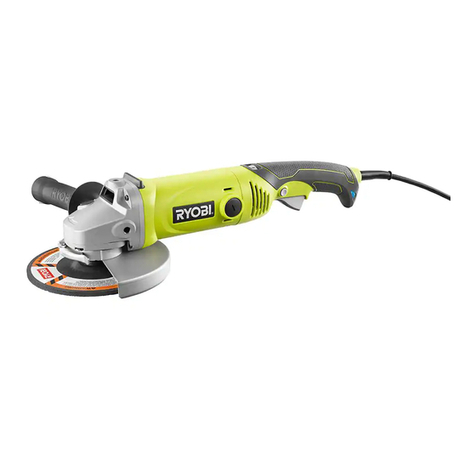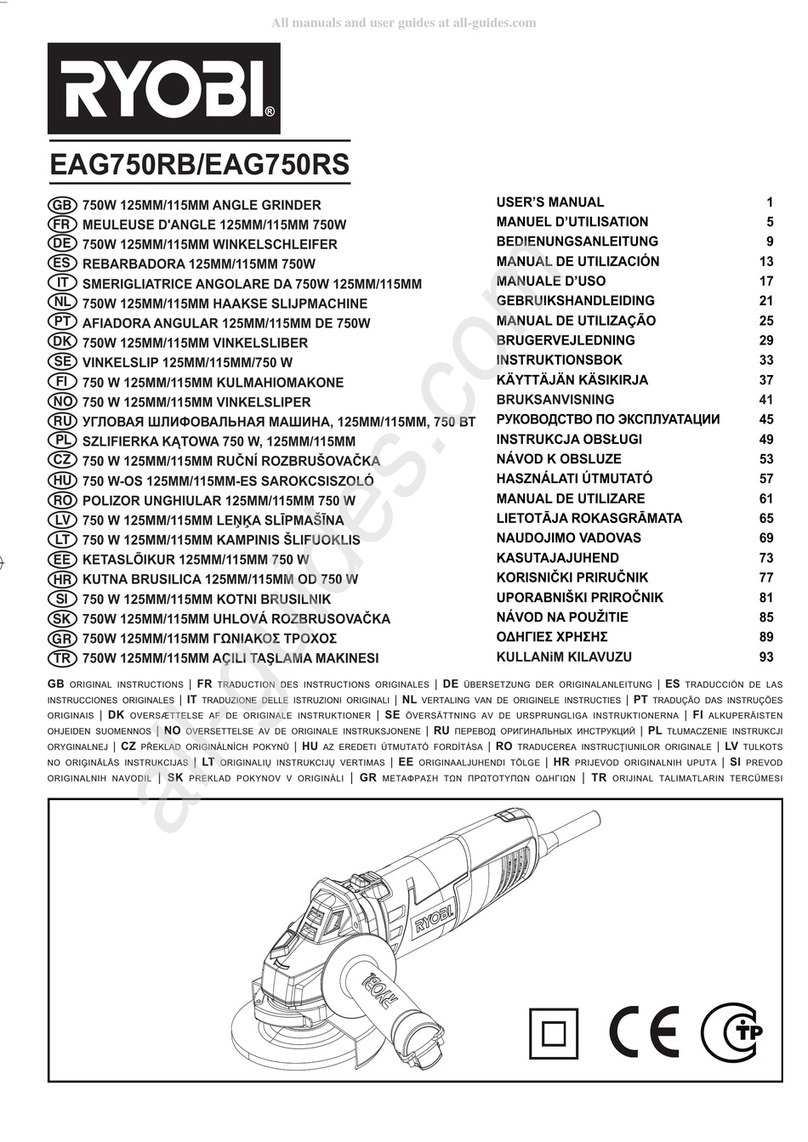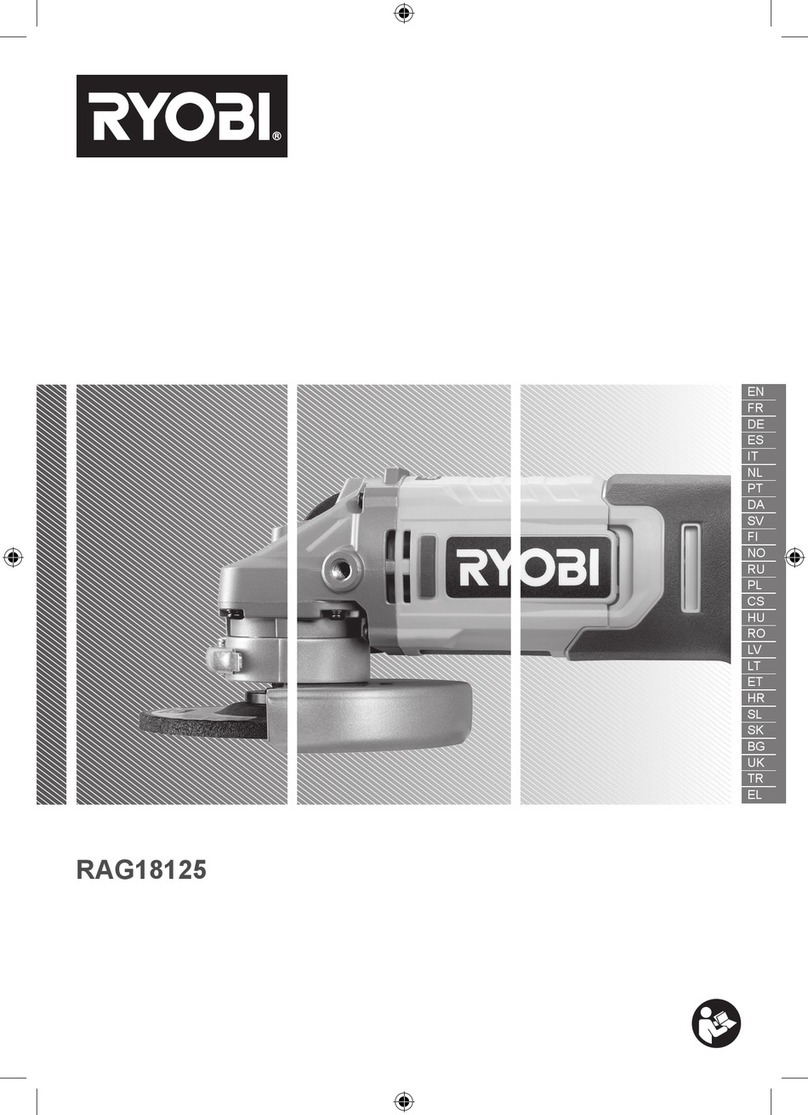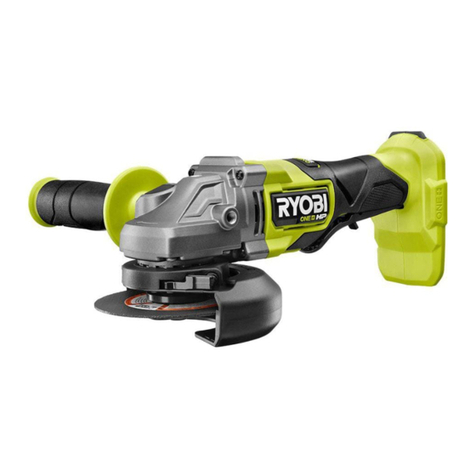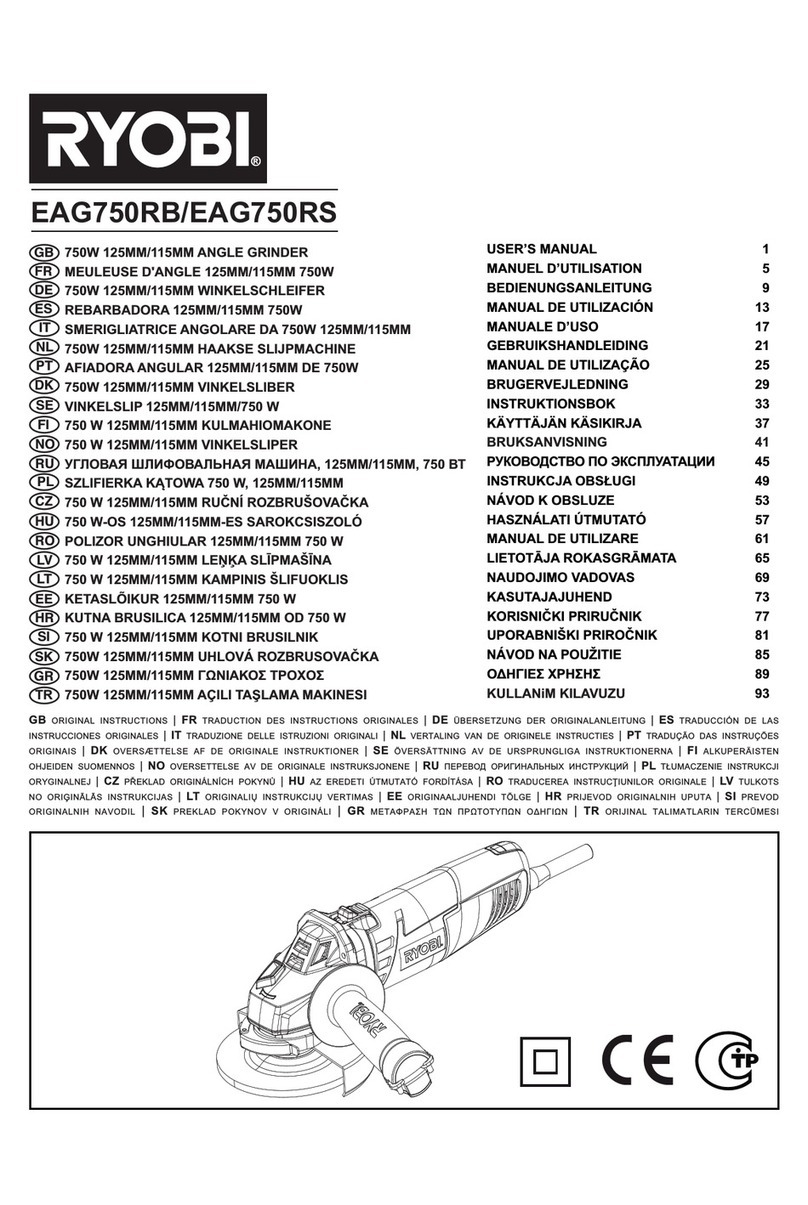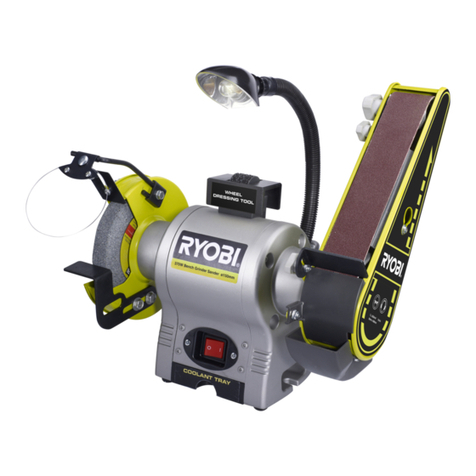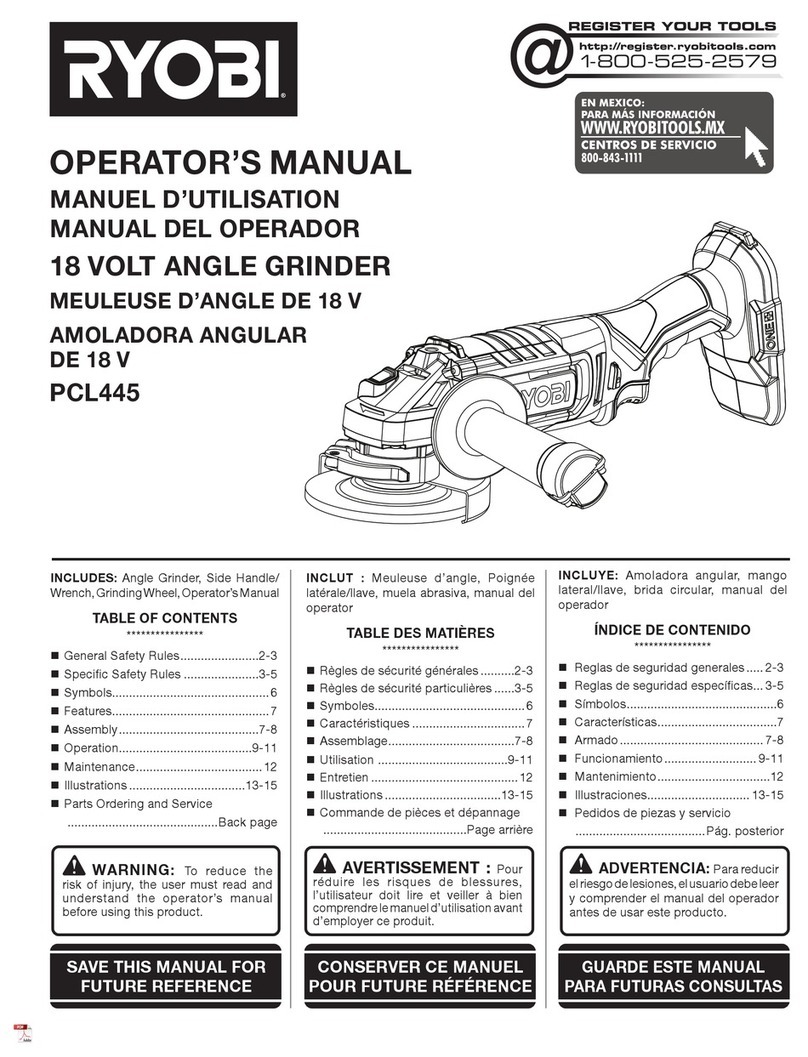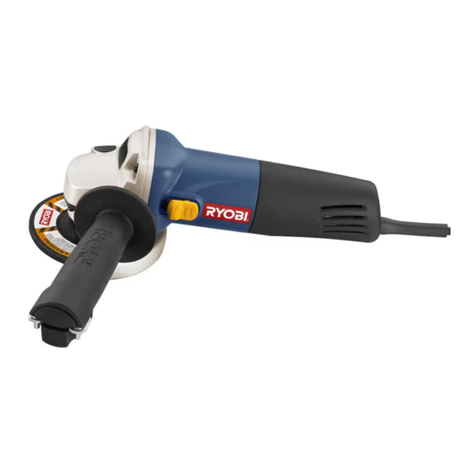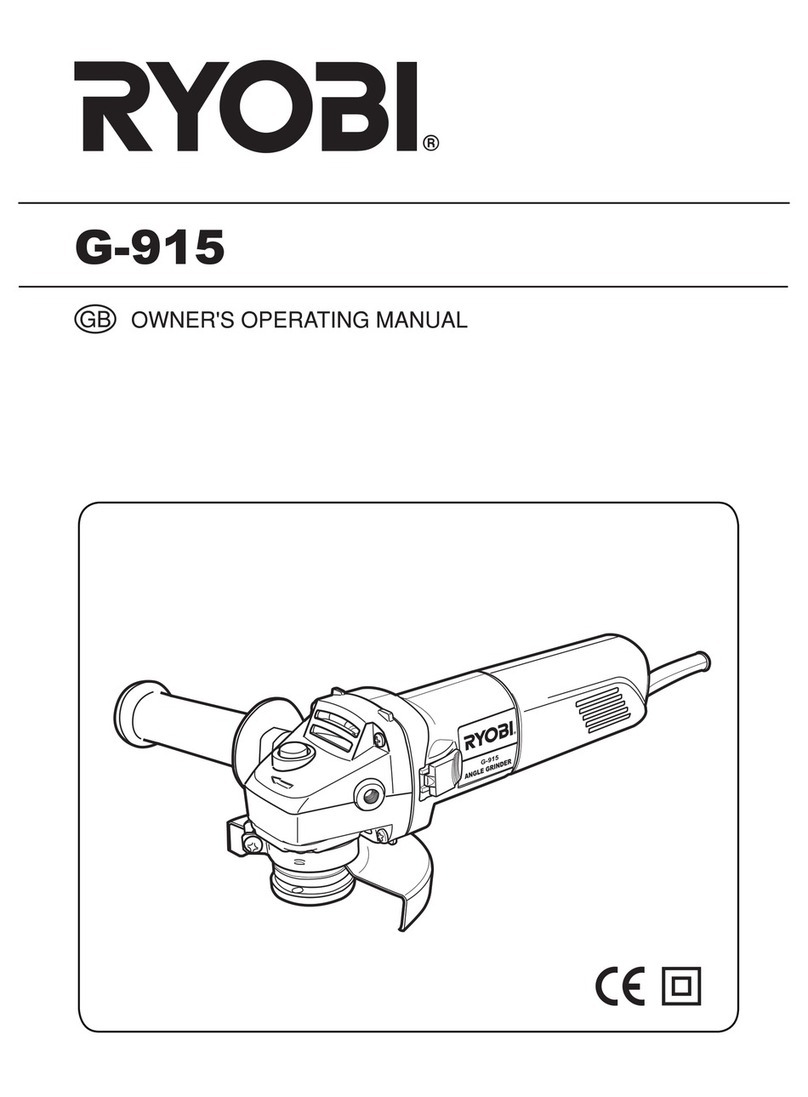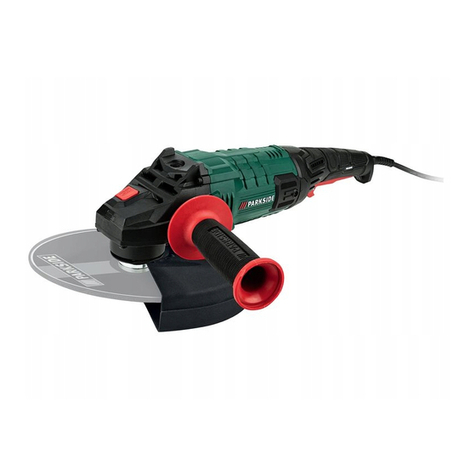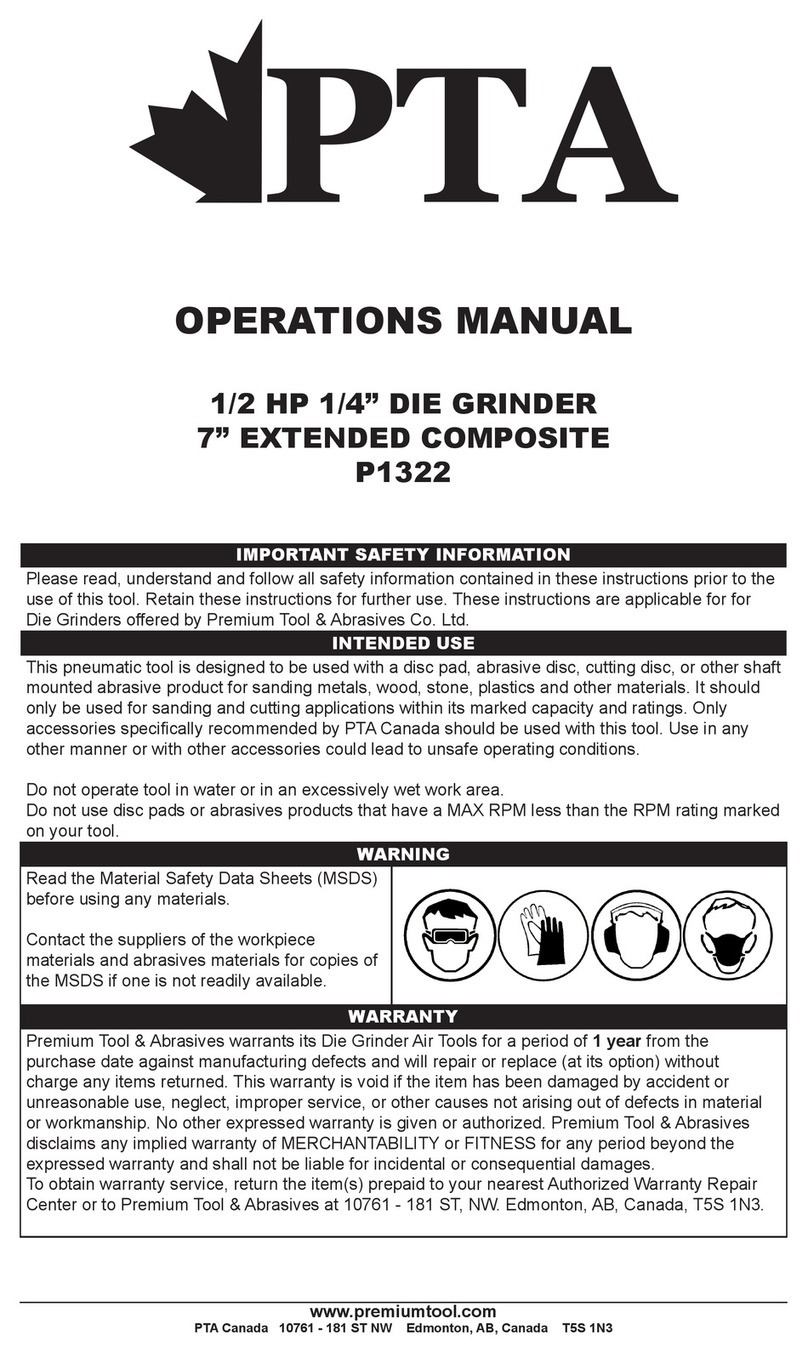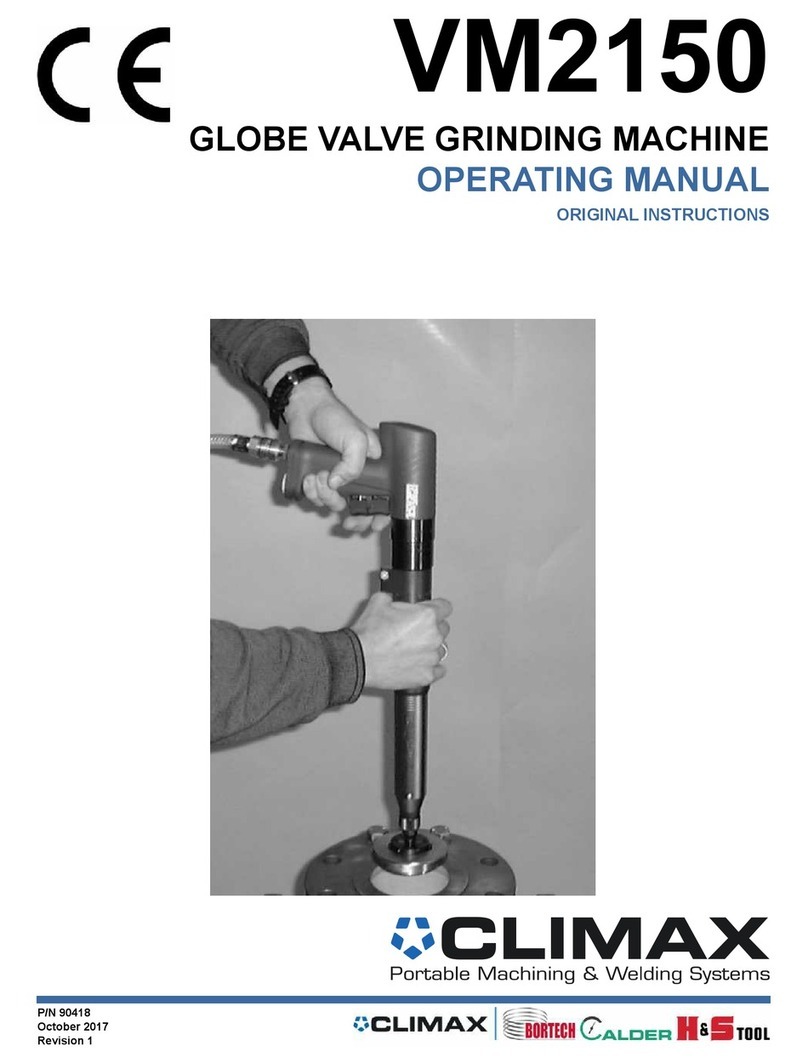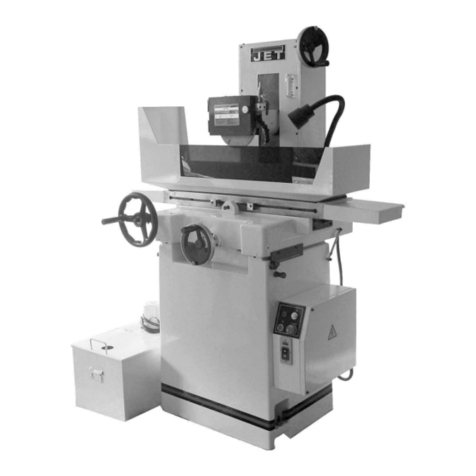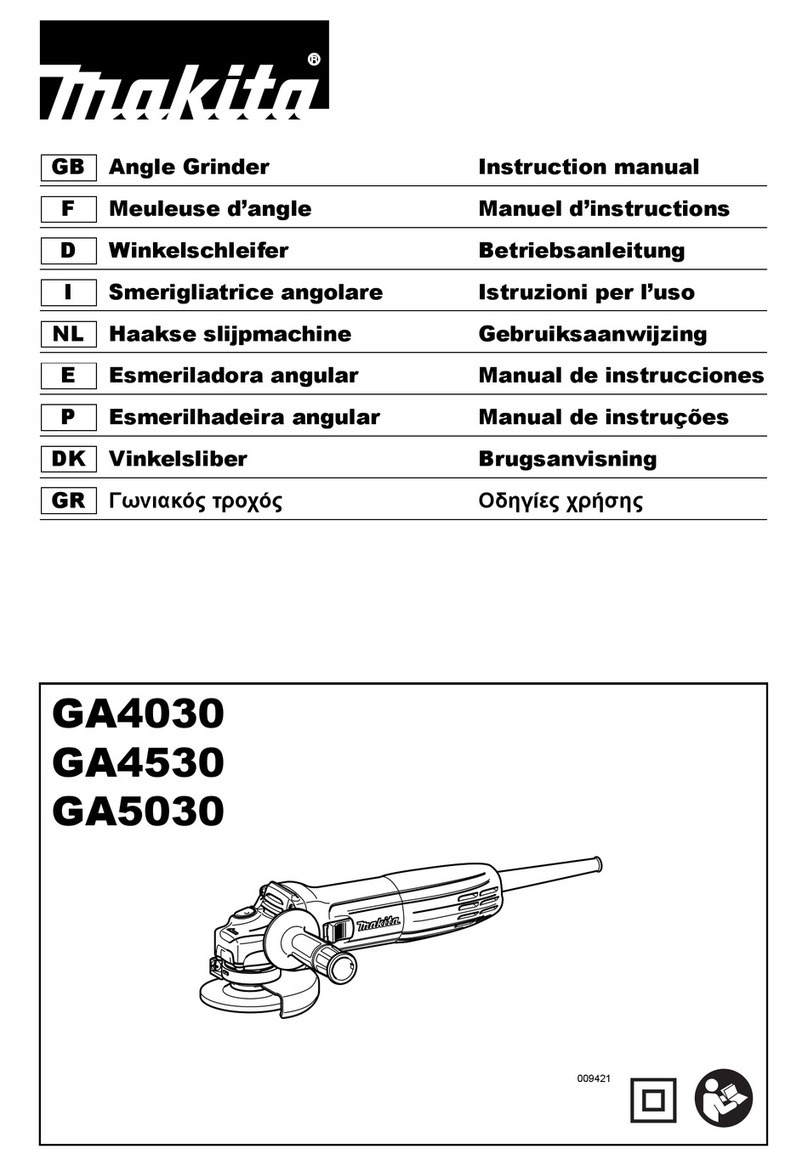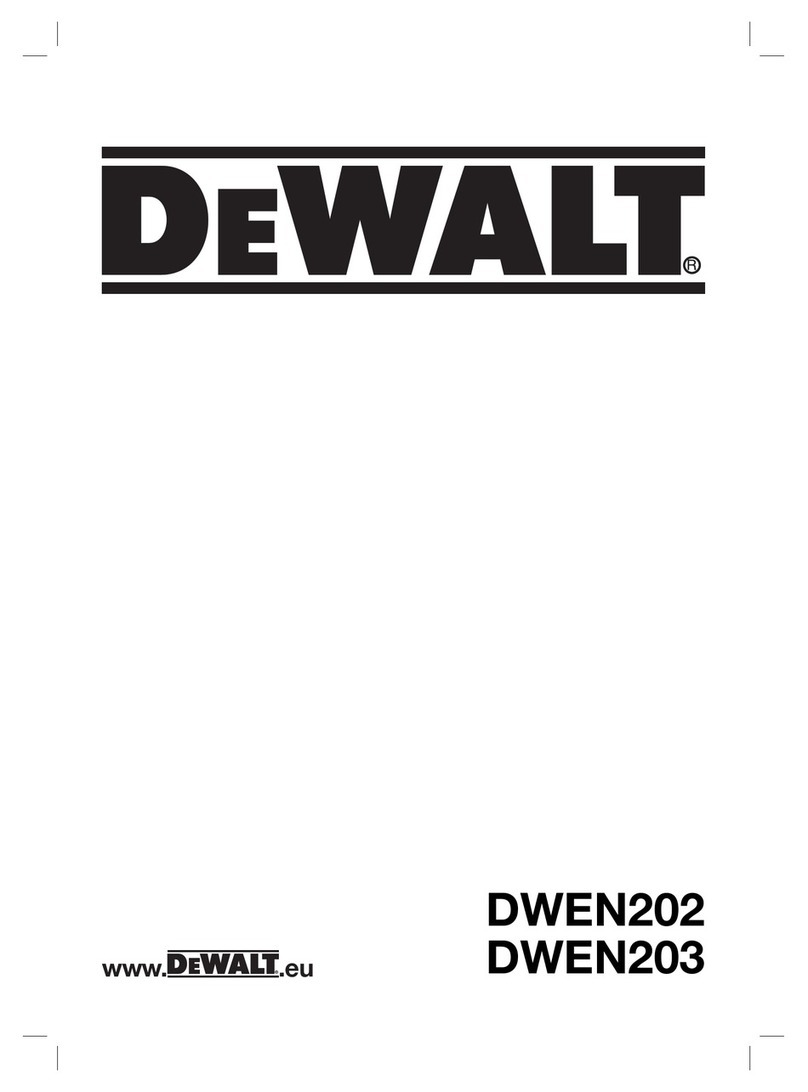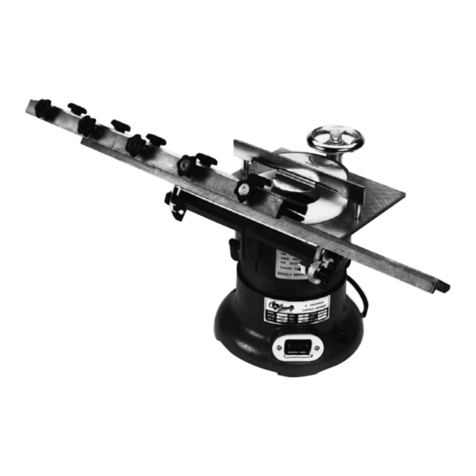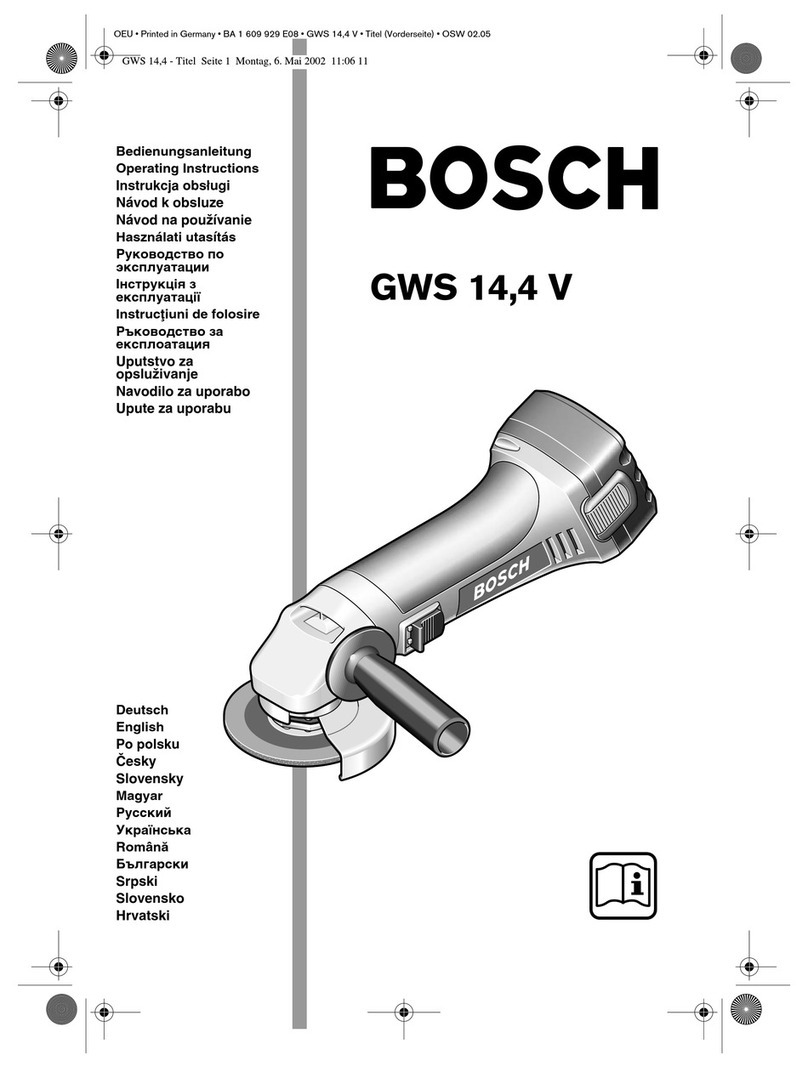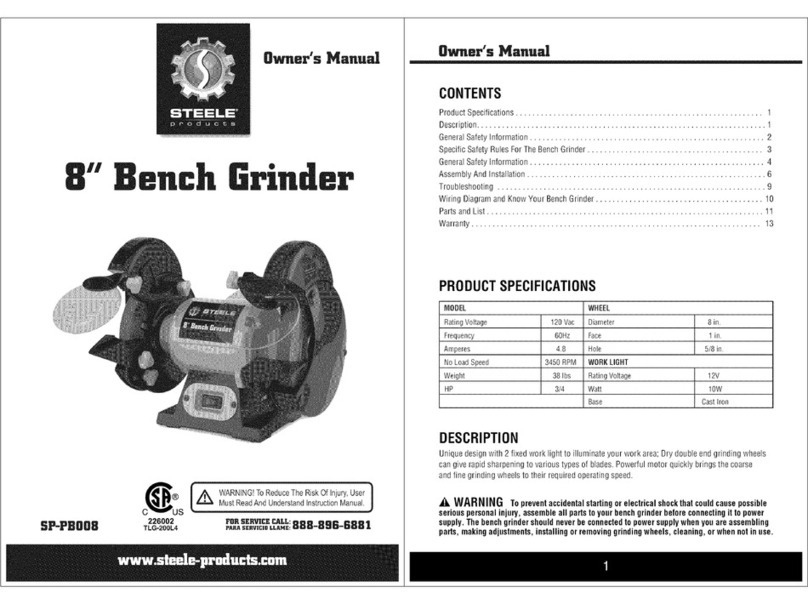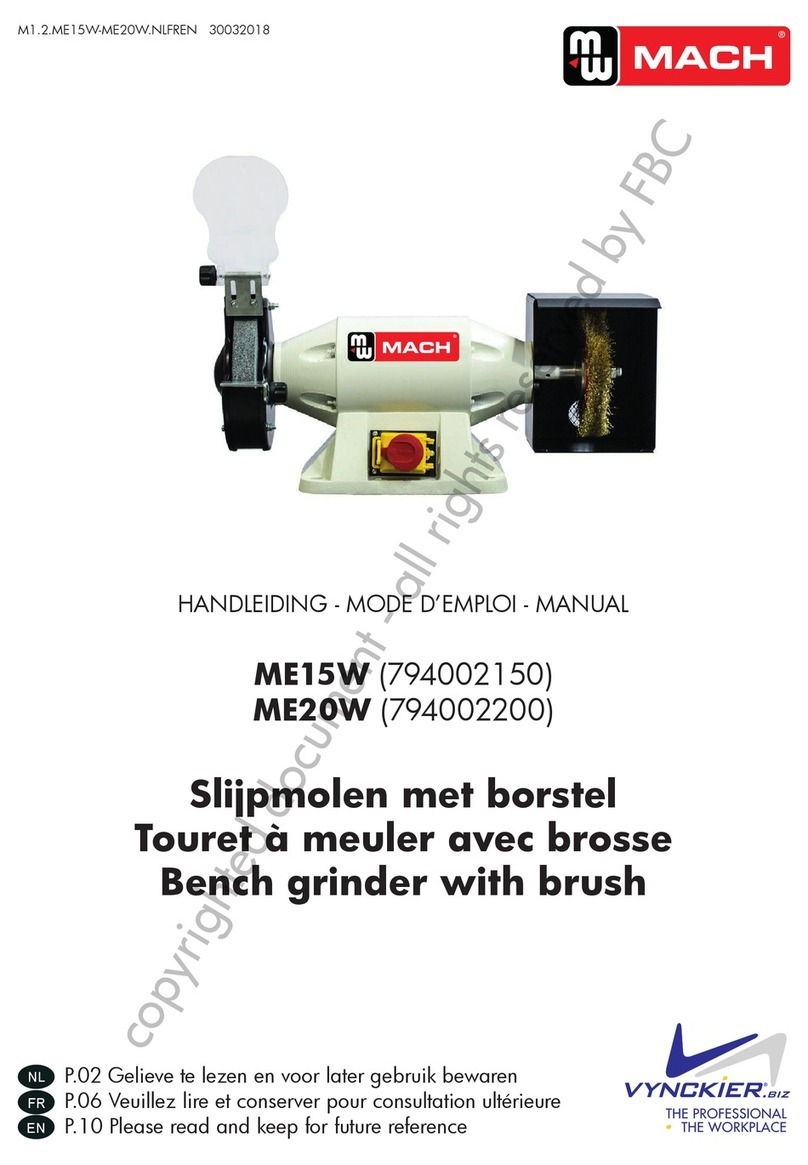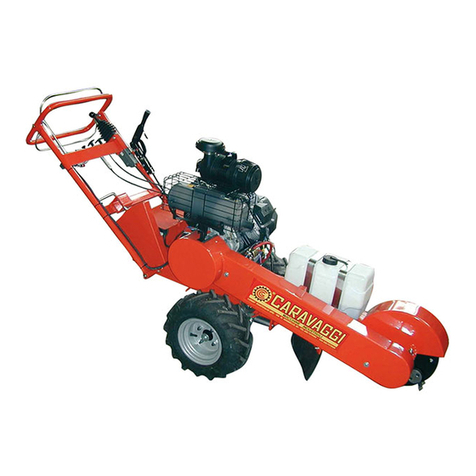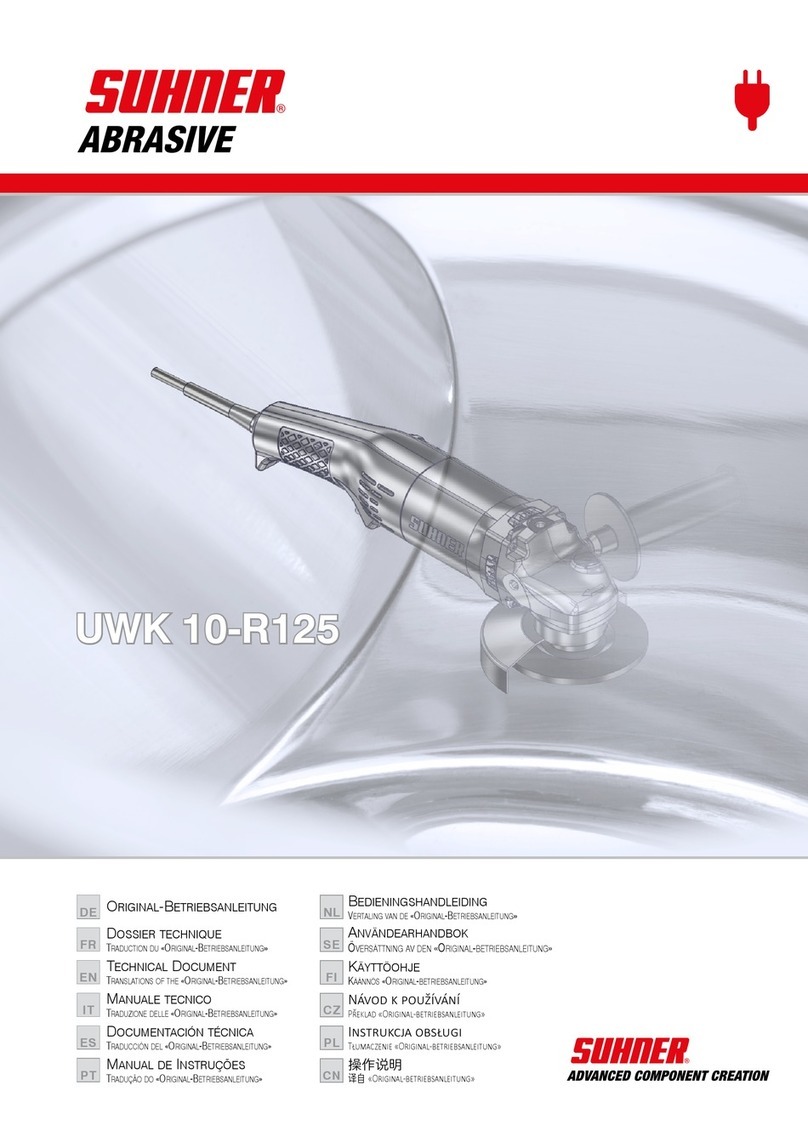
- 5 -
g) Do not use a damaged accessory. Before each use
inspect the accessory such as abrasive wheels for
chips and cracks, backing pad for cracks, tear or
excess wear, wire brush for loose or cracked wires.
If power tool or accessory is dropped, inspect for
damage or install an undamaged accessory. After
inspecting and installing an accessory, position
yourself and bystanders away from the plane of
the rotating accessory and run the power tool at
maximum no-load speed for one minute. Damaged
accessories will normally break apart during this test time.
h) Wear personal protective equipment. Depending on
application, use face shield, safety goggles or safety
glasses. As appropriate, wear dust mask, hearing
protectors, gloves and workshop apron capable of
stopping small abrasive or workpiece fragments. The
eye protection must be capable of stopping ying debris
generated by various operations . The dust mask or
respirator must be capable of ltrating particles generated
by your operation. Prolonged exposure to high intensity
noise may cause hearing loss.
i) Keep bystanders a safe distance away from work
area. Anyone entering the work area must wear
personal protective equipment. Fragments of workpiece
or of a broken accessory may y away and cause injury
beyond immediate area of operation.
j) Hold power tool by insulated gripping surfaces only,
when performing an operation where the cutting
accessory may contact hidden wiring or its own cord.
Cutting accessory contacting a “live” wire may make
exposed metal parts of the power tool “live” and shock the
operator.
k) Position the cord clear of the spinning accessory. If
you lose control, the cord may be cut or snagged and your
hand or arm may be pulled into the spinning accessory.
l ) Never lay the power tool down until the accessory
has come to a complete stop. The spinning accessory
may grab the surface and pull the power tool out of your
control.
m) Do not run the power tool while carrying it at your
side. Accidental contact with the spinning accessory could
snag your clothing, pulling the accessory into your body.
n) Regularly clean the power tool’s air vents. The motor’s
fan will draw the dust inside the housing and excessive
accumulation of powdered metal may cause electrical
hazards.
o) Do not operate the power tool near flammable
materials. Sparks could ignite these materials.
p) Do not use accessories that require liquid coolants.
Using water or other liquid coolants may result in
electrocution or shock.
Kickback and Related Warnings
Kickback is a sudden reaction to a pinched or snagged
rotating wheel, backing pad, brush or any other accessory.
Pinching or snagging causes rapid stalling of the rotating
accessory which in turn causes the uncontrolled power tool to
be forced in the direction opposite of the accessory’s rotation
at the point of the binding.
For example, if an abrasive wheel is snagged or pinched by
the workpiece, the edge of the wheel that is entering into the
pinch point can dig into the surface of the material causing
the wheel to climb out or kick out. The wheel may either jump
toward or away from the operator, depending on direction
of the wheel’s movement at the point of pinching. Abrasive
wheels may also break under these conditions.
Kickback is the result of power tool misuse and/or incorrect
operating procedures or conditions and can be avoided by
taking proper precautions as given below.
a) Maintain a firm grip on the power tool and position
your body and arm to allow you to resist kickback
forces. Always use auxiliary handle, if provided, for
maximum control over kickback or torque reaction
during start-up. The operator can control torque
reactions or kickback forces, if proper precautions are
taken.
b) Never place your hand near the rotating accessory.
Accessory may kickback over your hand.
c) Do not position your body in the area where power
tool will move if kickback occurs. Kickback will propel
the tool in direction opposite to the wheel’s movement at
the point of snagging.
d) Use special care when working corners, sharp edges
etc. Avoid bouncing and snagging the accessory.
Corners, sharp edges or bouncing have a tendency to
snag the rotating accessory and cause loss of control or
kickback.
e) Do not attach a saw chain woodcarving blade or
toothed saw blade. Such blades create frequent kickback
and loss of control.
Safety Warnings Specic for Grinding Operations:
a) Use only wheel types that are recommended for your
power tool and the specific guard designed for the
selected wheel. Wheels for which the power tool was not
designed cannot be adequately guarded and are unsafe.
b) The guard must be securely attached to the power
tool and positioned for maximum safety, so the least
amount of wheel is exposed towards the operator.
The guard helps to protect operator from broken wheel
fragments and accidental contact with wheel.
c) Whe els m ust b e use d o nl y f or re com men ded
applications. For example: do not grind with the side
of cut-off wheel. Abrasive cut-off wheels are intended for
peripheral grinding, side forces applied to these wheels
may cause them to shatter.
d) Always use undamaged wheel flanges that are of
correct size and shape for your selected wheel.
Proper wheel anges support the wheel thus reducing the
possibility of wheel breakage.
e) Do not use worn down wheels from larger power
tools. Wheel intended for larger power tool is not suitable
for the higher speed of a smaller tool and may burst.
INSTRUCTIONS FOR SAFE HANDLING
1. Make sure that the tool is only connected to the voltage
marked on the rating plate.
2. Never use the tool if its cover or any bolts are missing. If the
cover or bolts have been removed, replace them prior to
use. Maintain all parts in good working order.
3. Never touch the blade, drill bit, grinding wheel or other mov-
ing parts during use.
4. Never start a tool when its rotating component is in contact
with the work piece.
5. Grinding wheels must be stored in a dry place.
Do not put any object on the wheels.
Grinding wheels must not be used for any operation other
than grinding.
Grinding wheels must be stored and handled with care in
accordance with the manufacturer’s instruction.
6. Ensure that the wheel is tted in accordance with this man-
ual.
7. Ensure that the grinding wheel is correctly mounted and
tightened before use and run the tool at no-load speed for
30 seconds in a safe position. Stop immediately if there is
considerable vibration or if other defects are detected. If this
condition occurs, check the tool to determine the cause.
8. Check that the work piece is properly supported.
9. Do not remove the soft paper in the center of the grinding
wheel. (If the paper has been previously removed, insert
some soft paper or rubber between grinding wheel and
ange.)
10. Grip the tool securely with both hands while operating.

